Description, composition and characteristics
Non-woven wallpaper is a type of wallpaper made using modern technologies. Non-woven is a non-woven material consisting of paper and fabric fibers bound with a polymer material. In its structure, the polymer material is very similar to fiberglass. It does not shrink or shrink after getting wet, and is also much more elastic and stronger than paper, which is used to make cheap paper wallpaper.
Such material can consist of several layers, the top of which can be a variety of fabric, foamed vinyl, embossed, and so on. All rolls are supplied with instructions for pasting with symbols of technical characteristics of certain types of wallpaper.
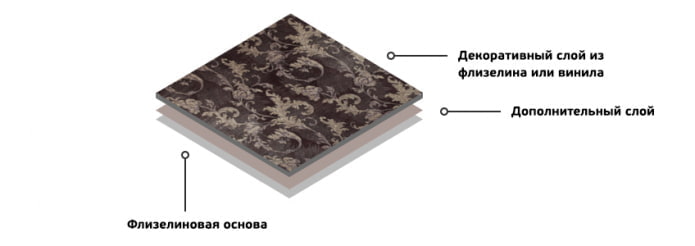
Technical characteristics
- Modern manufacturers produce non-woven fabrics with micro-perforation, which allow air to pass through well;
- Not as afraid of fire and water as paper;
- Resistant to physical wear;
- Eco-friendly.
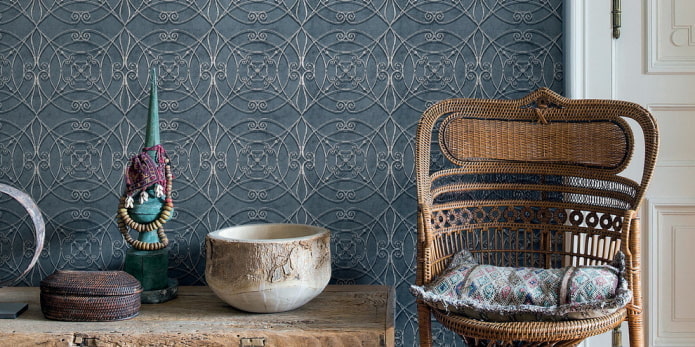
Pros and cons
Are they harmful to health?
In the absence of exposure to high temperatures, non-woven wallpaper can rightfully be considered safe for the health of ordinary people and allergy sufferers.


Types of non-woven wallpaper
Modern manufacturers offer several types of such wallpaper.
On a non-woven base
Depending on the top decorative layer, they can be paper, acrylic, vinyl or textile.
Such material has the following characteristics:
- Sufficient strength and elasticity.
- Easy to glue to wall and ceiling surfaces.
- Relatively thin and light.
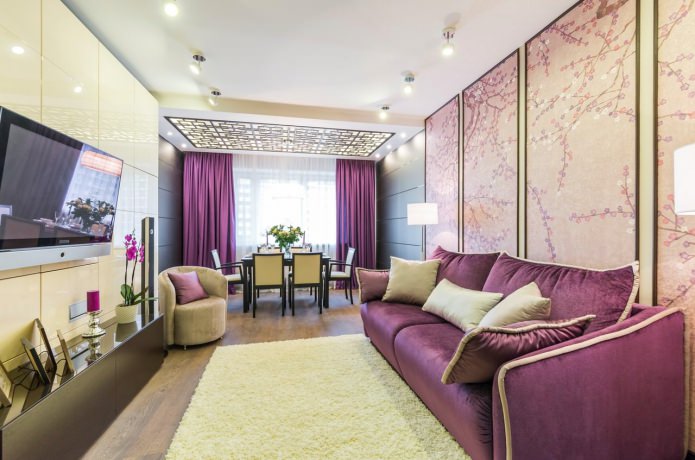
Fully non-woven
Such canvases consist of non-woven material produced by interweaving textile and paper fibers, which has an additional connection of a polymer binder.
- Non-woven material is resistant to stretching.
- During pasting of surfaces, non-woven fabric does not deform.
- The fire resistance of such wallpaper is higher than that of ordinary paper analogues.
- Such material has good adhesion to any surface, be it porous concrete, plywood or plasterboard.
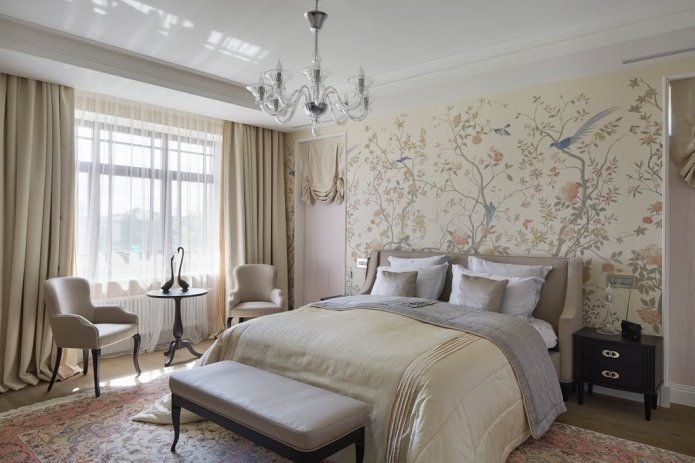
Paintable
Ideal for creative people who like to change the interior of their rooms often. They can be smooth or textured. Embossed ones look the most impressive, but due to the possible accumulation of dust on protruding elements, they can cause allergic reactions.
- Such canvases are considered highly durable.
- Abrasion-resistant.
- They can be repainted several times.
- They have increased resistance to fire.
- With several layers of paint, this type of wallpaper improves its soundproofing properties.
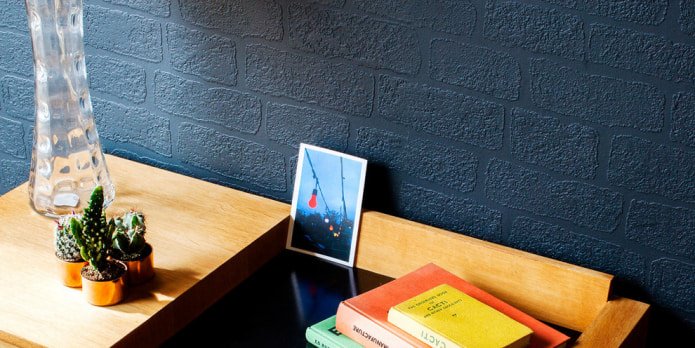
The photo shows textured wallpaper under a brick.
On a fabric base
This type of wall decoration is used in luxurious interiors. These wallpapers consist of two layers – a non-woven base and an upper fabric layer.
- The cost is one of the highest.
- This material is rightfully considered the most durable of all existing ones.
- They look very impressive in the interior.

Washable
Ideal for the interior of the kitchen or bathroom.
- Resistant to frequent washing without the use of chemicals.
- Non-woven wallpaper does not absorb moisture.
- Do not deform under the influence of large amounts of moisture.
- Do not peel off when water getting on the canvas.

Design options and designs
Non-woven wallpaper has been breaking records for popularity among wall and ceiling coverings for several years now. It looks great in the bathroom, living room, bedroom, kitchen and children’s room.
Thanks to the possibility of combining different types of wallpaper, you can end up with a very unexpected and original interior. In addition to the combination of wallpaper types, combinations of different color schemes with the same texture in one room look good.
Let’s consider popular design methods:
- Geometric pattern (stripes, checkered, abstract, zigzag, polka dot);
- Patterns and ornaments (damask, monograms, lace, openwork pattern);
- Floral print (flowers, leaves, trees);
- Birds and animals;
- Imitation of various surfaces (stone, wood, leather, plaster, etc.);
- Photo printing (city, flowers, nature, cartoon scenes, 3D design).
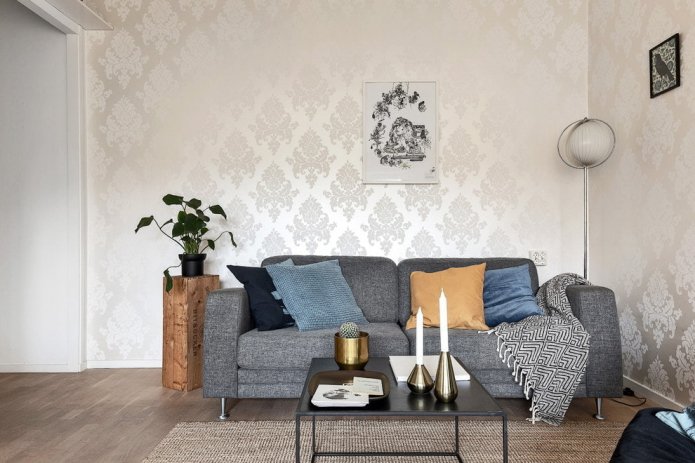

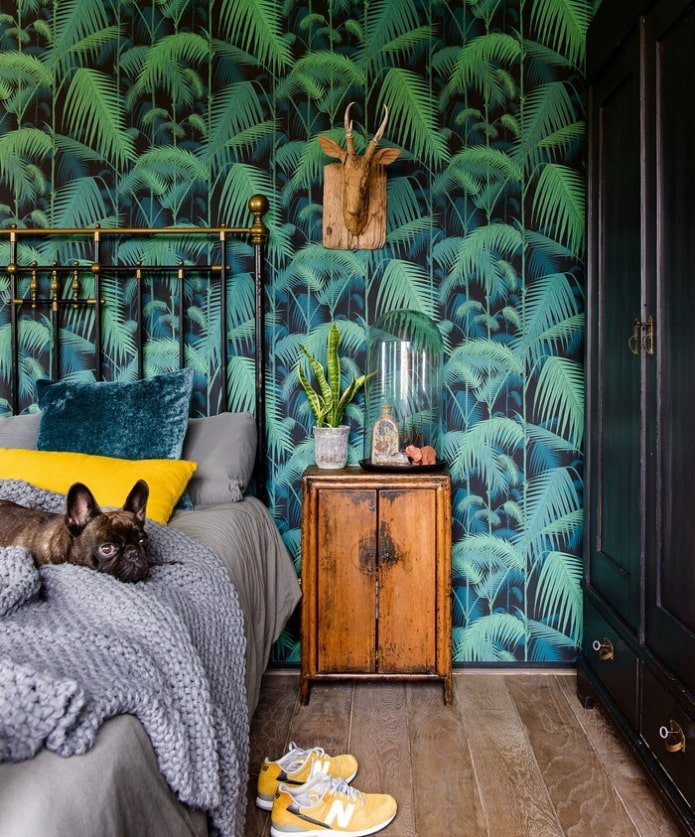

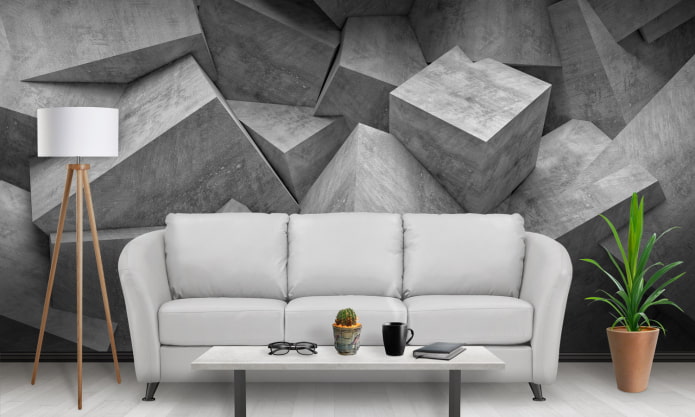
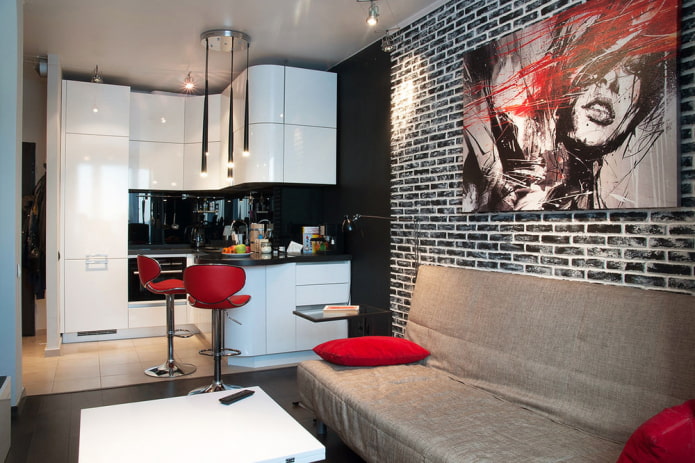
Presentation in various styles
Non-woven fabrics are suitable for interior design in various styles, but the most popular stylistic directions at present are considered to be the following.
Classic
The style has been popular for many centuries. Currently, on store shelves you can find a wide variety of non-woven wallpapers of golden color with various monograms, ideally emphasizing the taste of the owners of the interiors who have given them preference.
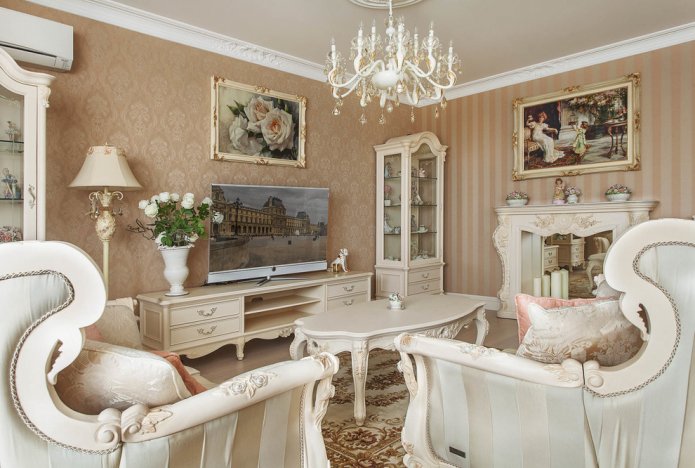
The photo shows companion wallpapers (non-woven striped and vinyl with monograms) in the interior of a living room in a classic style.

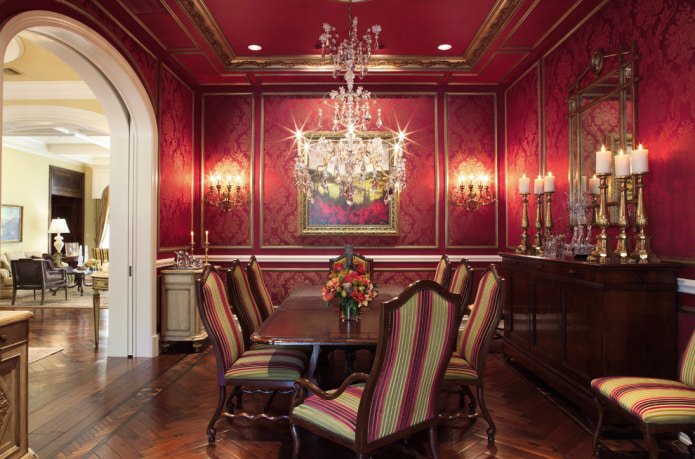
Provence
A delicate, romantic interior, immersed in a huge amount of daylight and a small floral print.
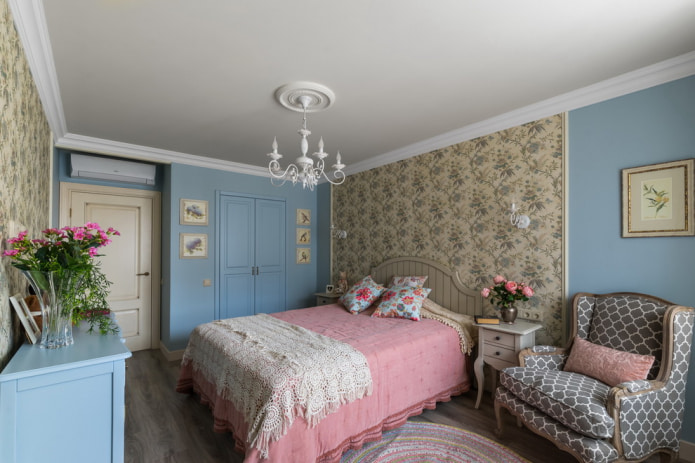
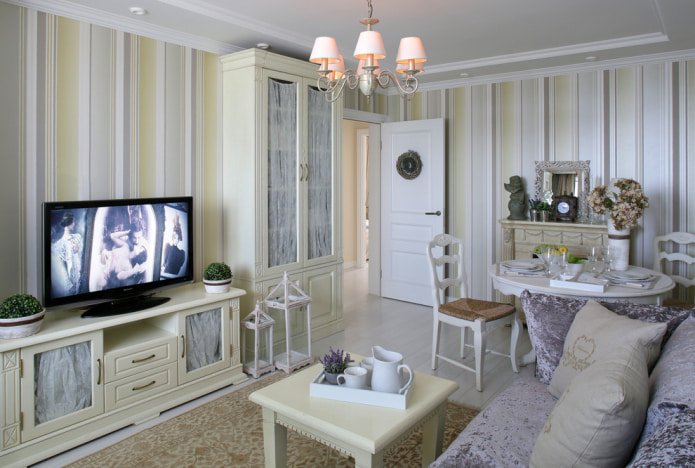
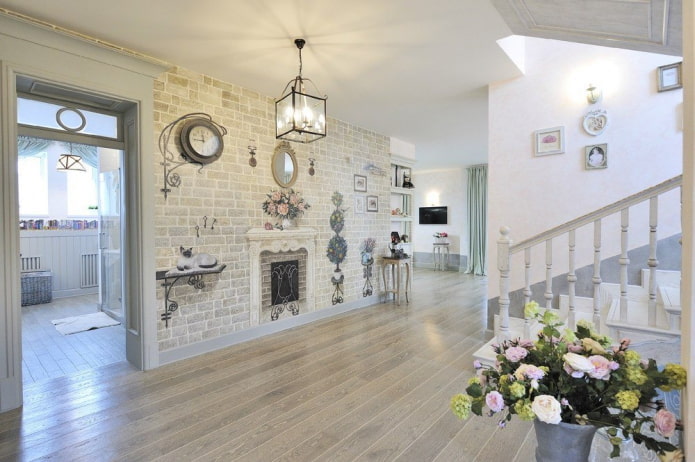
Scandinavian
It belongs to laconic styles, characterized by a large number of light shades in the interior.

The photo shows seamless non-woven wallpaper in Scandinavian style, the joints on the walls are not visible.

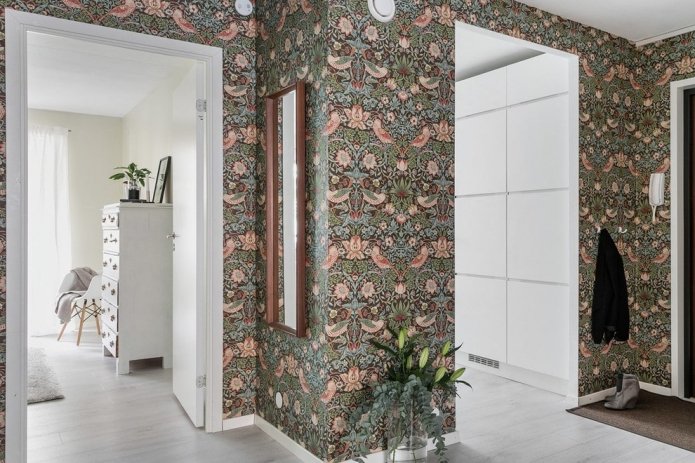
Modern
It is distinguished by the presence of various geometric patterns that can be combined and bold color solutions. It will perfectly fit into the interior of a person with perfect taste.

The photo shows a modern style bedroom with non-woven photo wallpaper on the walls.
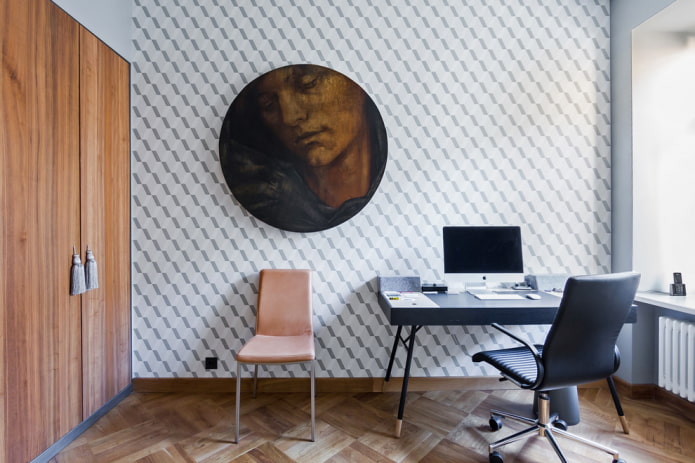
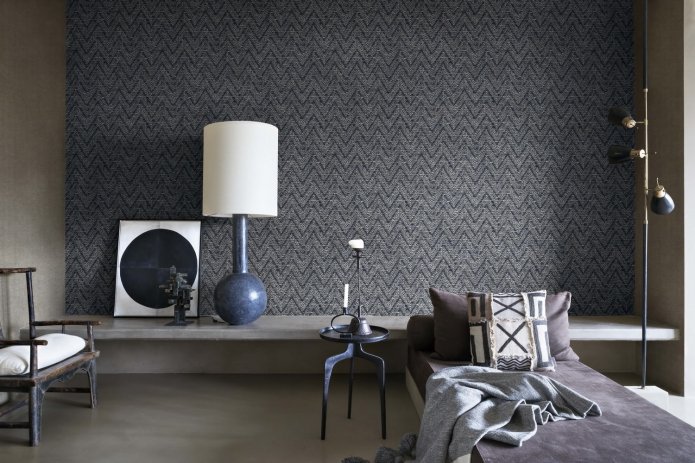
Marine
A calm style, ideal for bedrooms, children’s rooms and bathrooms. Creates a sense of peace and tranquility in the interior.
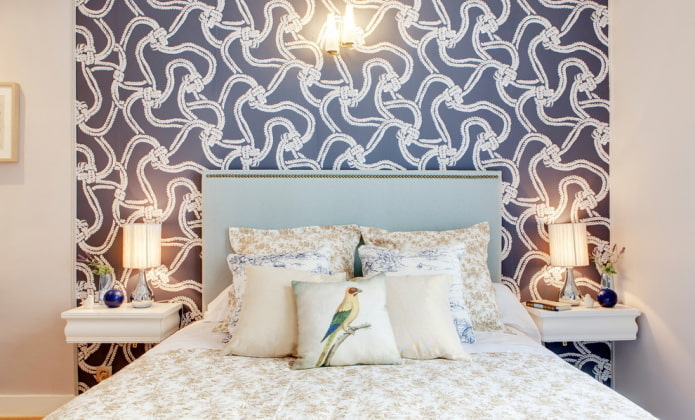


Color palette
Modern manufacturers of non-woven wallpaper offer a wide range of colors, among the variety of which you can choose the ideal shade for a certain style and interior. On store shelves you can find canvases of pastel, light, solid, dark, bright and saturated colors for absolutely every taste.
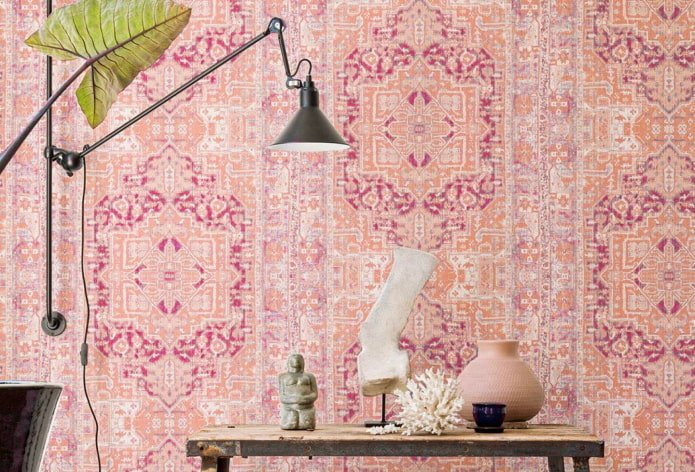


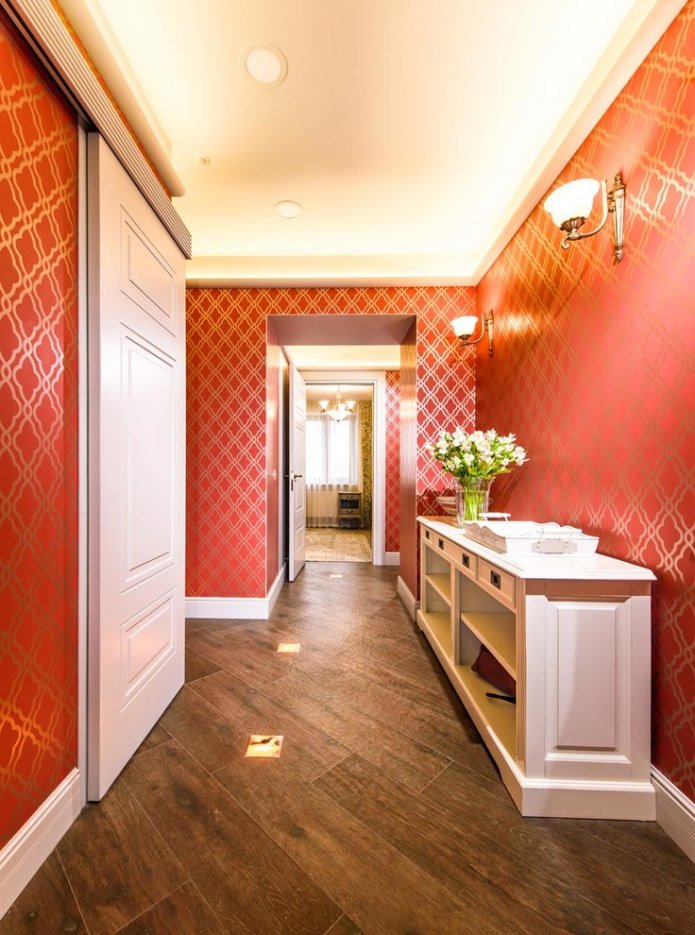
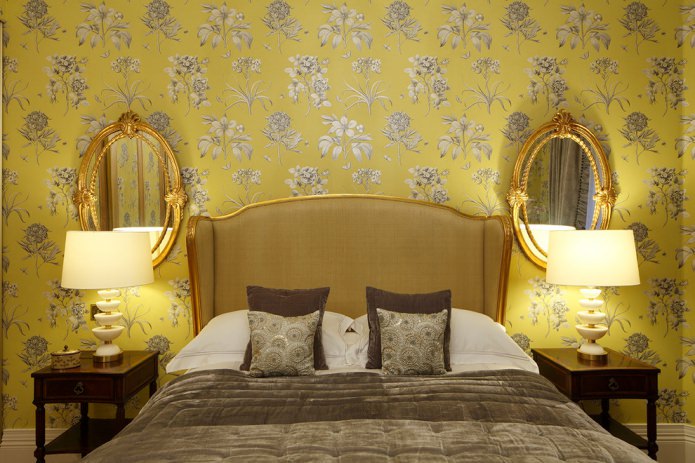
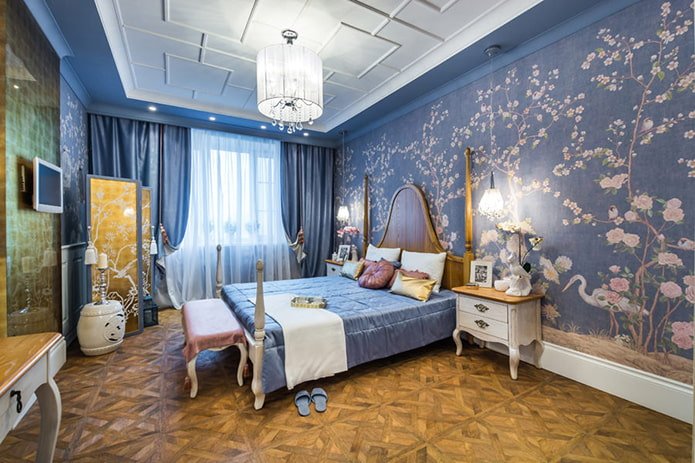

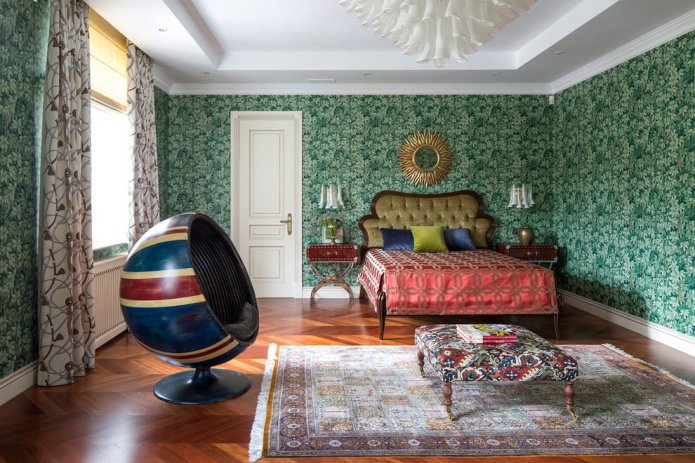
Design ideas in room interiors
With the right organization of space, with the help of color solutions for walls and ceilings, you can turn even the smallest room into a cozy home, be it a living room, kitchen, bedroom, children’s room, bathroom or hallway.






Selection rules
It is very important, from the whole variety of non-woven wallpaper offered, to choose exactly those that fit perfectly into the interior, and the effort and money spent on rolls are not wasted. To do this, when choosing non-woven wallpaper, you should take into account a few simple rules:
- You should not choose dark-colored canvases for rooms with windows facing north;
- For narrow and long rooms, you should not choose a pattern with vertical stripes, which will visually narrow the room even more, but for rooms with low ceilings, such a pattern will be ideal;
- You do not need to buy brightly colored wallpaper for the bedroom, since first of all this is a place of rest, and bright colors will irritate the optic nerves;
- When choosing rolls for the kitchen or bathroom, it is very important that they are washable, since these are places of high humidity and pollution;
- If there is furniture in the room being renovated, it is necessary to take into account the color combination between it and the future wall covering;
- For corridors, it is better to choose embossed ones, which are absolutely not subject to abrasion and have anti-vandal properties.
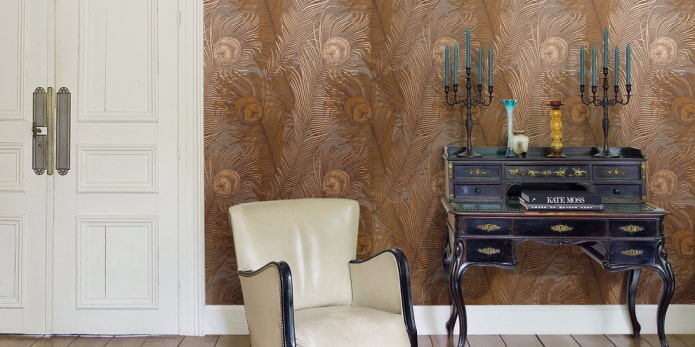
How to glue correctly?
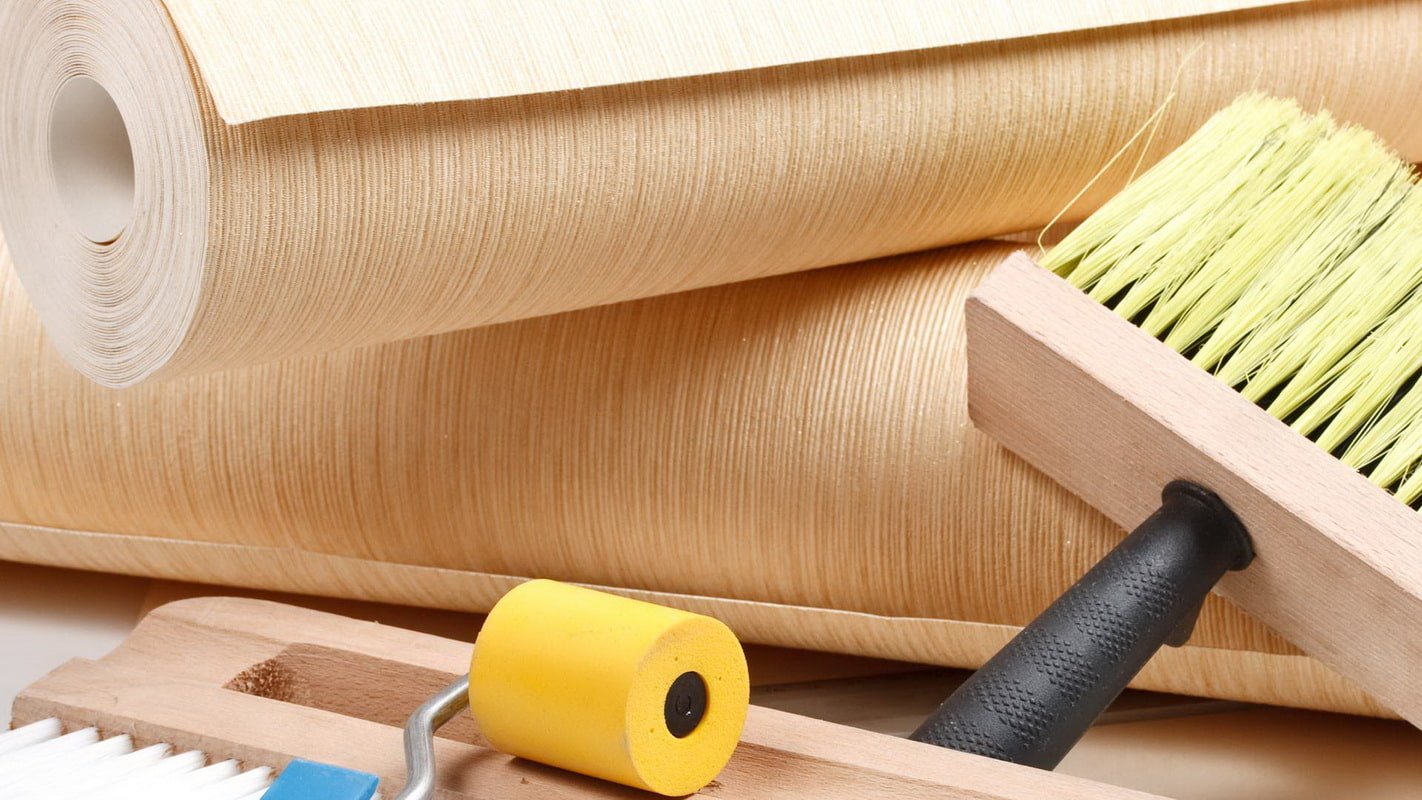
The result of pasting will depend on the availability of the necessary tools and several other factors:
- Firstly, it is necessary to carefully prepare and clean the surfaces to be pasted from the remains of old wallpaper;
- Secondly, a couple of hours before pasting, it is necessary to prime the walls;
- Thirdly, it is necessary to choose the right glue – as a rule, wallpaper adhesives are sold in the form of dry mixes with detailed instructions for preparing the adhesive composition;
- Next, you need to start cutting the roll of the required length and, if necessary, adjust the pattern;
- Non-woven fabrics are seamless, so they should be glued end to end, but never overlapping;
- Smooth the fabrics in a herringbone pattern from top to bottom, driving out air bubbles;
- When pasting, pay special attention to sealing the seams.
It is very important that the room being pasted over is not exposed to drafts, otherwise all the work will go down the drain.
Painting features
Painted wallpaper has a higher degree of wear resistance, is less susceptible to contamination and allows you to change the interior of the room up to five times, without major repairs.
Which paint is better to choose?
If the desired shade of color is not available, you need to buy white paint and tint it yourself, or by contacting specialists in the store.
- For painting, you should choose acrylic or water-based paint.
- Acrylic paint is more durable and allows you to wash the walls much more times, although water-based paint is cheaper. Here, the choice is determined solely by financial sufficiency.
- In addition, depending on the light-reflecting properties, the paint can be matte, glossy, semi-gloss, semi-matte or satin. The choice depends on the desired effect on the painted walls or ceiling.

Step-by-step painting instructions
- The surface must be painted after the glue has completely dried, that is, a day or two after gluing the canvases.
- You must start painting the walls from the bottom, moving upwards.
- Places inaccessible to a roller or spray gun must be coated with a brush.
- To achieve an ideal result, you must paint the surface three times.
- Before applying the next layer of paint, the previous one must have time to dry, that is, the interval between paintings should be at least one hour.




Video
Below is a detailed video instruction on painting non-woven wallpaper.
How to tear off non-woven wallpaper?
Before buying wallpaper, many people think about how difficult it will be to remove the non-woven coating from the walls for subsequent repairs.
Step-by-step instructions
- First, you need to thoroughly wet the surface of the walls with water using a roller or a simple rag.
- Then wait about half an hour for the water to be absorbed into the surface and completely soften the coating.
- Using a spatula, calmly remove the canvases. If they are not completely removed, the remaining areas must be moistened with water again.
Video tutorial
This video tutorial will allow you to see in practice that removing non-woven wallpaper from walls is not a very difficult task.
Care and cleaning rules
Care recommendations
No matter how durable the wall covering is, careful handling will extend its service life.
- If the non-woven wallpaper is washable, then it should be periodically wiped with a damp cloth to prevent dust from accumulating, which can cause allergic reactions.
- If the manufacturer indicated in the instructions that the non-woven wallpaper cannot be washed, you can simply vacuum it periodically.
- You should save the insert from the wallpaper roll, on which the manufacturer indicates the cleaning method suitable for this type wallpaper.
How to wash non-woven wallpaper?
Before starting work, study the full list of care for non-woven wallpaper.
- Can be washed with an aqueous solution.
- For some types of wallpaper, the use of non-aggressive detergents is allowed.
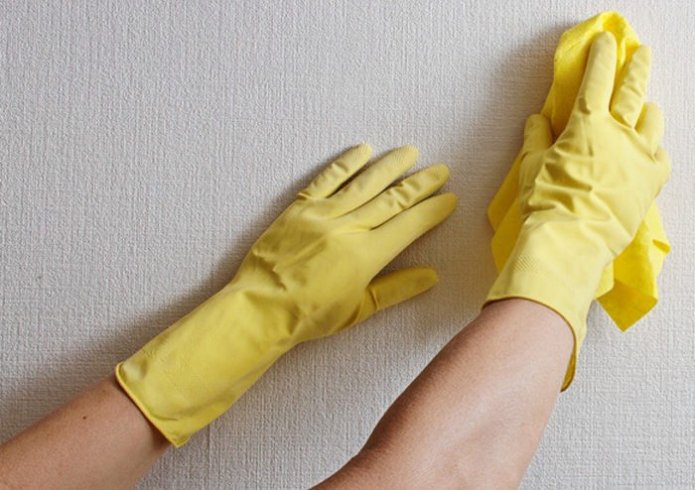
Now reading:
- Scandinavian Living Room: 50 Inspiring Photos and Design Tips
- Children’s room for three children: more than 50 photos and design ideas.
- Renovation of a 2-room Khrushchev apartment: design and layout ideas (86 photos)
- Ultimate Guide to Buying a Used Renault Fluence
- 12 Effective Methods to Eliminate Odor in the Refrigerator